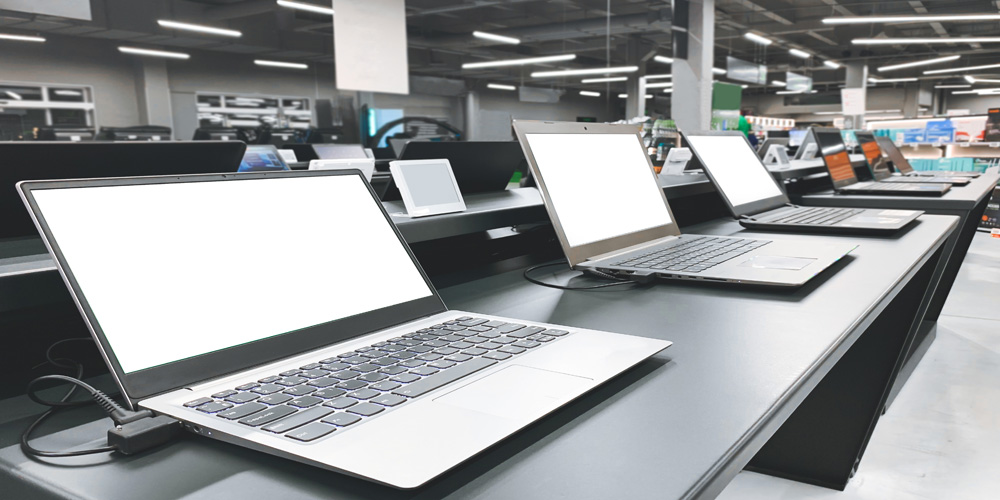A Quick Guide to Buying a New Laptop
Buying a new laptop can be a daunting task, especially with the myriad of options available in the market today. Whether you’re a student, a professional, or someone who just needs a device for casual use, choosing the right laptop involves considering several important factors. Here’s a comprehensive guide on what to look for when buying a new laptop.
1. Purpose and Use Case
Before diving into technical specifications, it’s crucial to determine the primary purpose of your laptop. Are you using it for gaming, graphic design, video editing, programming, or just browsing and streaming? Your use case will significantly influence the specs you should prioritize.
- Casual Use: If you’re using the laptop for web browsing, social media, and streaming, you don’t need high-end specs. A mid-range processor, 4-8GB of RAM, and a decent battery life should suffice.
- Professional Use: For tasks like programming, graphic design, or video editing, look for laptops with more powerful processors (like Intel i7 or AMD Ryzen 7), at least 16GB of RAM, and dedicated graphics cards.
- Gaming: Gamers should prioritize high-performance processors, powerful GPUs, and high-refresh-rate displays.
2. Operating System
The choice of operating system (OS) is fundamental. The main options are Windows, macOS, and Chrome OS.
- Windows: Offers a wide range of hardware choices and is compatible with most software applications.
- macOS: Known for its smooth performance and integration with other Apple products. Ideal for creative professionals.
- Chrome OS: Lightweight and efficient for basic tasks, often found on budget-friendly Chromebooks.
3. Processor (CPU)
The CPU is the brain of your laptop. It determines how fast your laptop can process data.
- Intel vs. AMD: Intel processors like the Core i5 and i7 are popular, but AMD’s Ryzen series offers competitive performance at often lower prices.
- Performance Needs: For basic tasks, an Intel Core i3 or AMD Ryzen 3 is sufficient. For more demanding applications, consider at least an Intel Core i5 or AMD Ryzen 5.
4. RAM
RAM (Random Access Memory) affects how smoothly your laptop can run multiple applications simultaneously.
- Minimum Requirement: 4GB is the bare minimum for basic tasks. However, 8GB is recommended for most users to ensure smooth multitasking.
- High-Performance Tasks: For gaming, programming, or content creation, 16GB or more is advisable.
5. Storage
Storage capacity and type can impact your laptop’s speed and ability to store files.
- HDD vs. SSD: SSDs (Solid State Drives) are faster and more reliable than traditional HDDs (Hard Disk Drives). They significantly improve boot times and application loading speeds.
- Capacity: 256GB SSD is a good starting point for general use. If you store a lot of large files, consider a larger SSD or a combination of SSD and HDD.
6. Graphics Card (GPU)
The GPU is important for tasks involving heavy graphics rendering.
- Integrated vs. Dedicated: Integrated graphics are sufficient for everyday tasks. For gaming or creative work, a dedicated GPU like NVIDIA GeForce or AMD Radeon is essential.
- VRAM: For gaming and graphic-intensive tasks, look for at least 4GB of VRAM.
7. Display
The display quality can significantly affect your experience.
- Size: 13-15 inches is ideal for portability and usability. Larger screens are better for gaming and design work.
- Resolution: Full HD (1920×1080) is the standard, but higher resolutions like 4K offer better clarity for design and media consumption.
- Refresh Rate: Gamers should consider displays with higher refresh rates (120Hz or 144Hz) for smoother visuals.
8. Battery Life
Battery life is crucial, especially if you need to use your laptop on the go.
- Average Battery Life: Aim for a laptop with at least 8 hours of battery life for all-day usage without needing to recharge.
- Usage Impact: Keep in mind that high-performance laptops often have shorter battery life due to more powerful components.
9. Build Quality and Design
The build quality affects durability and portability.
- Materials: Laptops made with aluminium or magnesium alloy tend to be more durable than plastic ones.
- Weight: If portability is important, look for lightweight models that are easy to carry.
10. Connectivity and Ports
Ensure the laptop has all the necessary ports and connectivity options.
- USB Ports: More USB ports (including USB-C) offer better connectivity for peripherals.
- HDMI/DisplayPort: Necessary for connecting to external displays.
- Wi-Fi and Bluetooth: Ensure the laptop supports the latest Wi-Fi standards (Wi-Fi 6) for better connectivity.
11. Keyboard and Trackpad
A comfortable keyboard and responsive trackpad enhance usability.
- Key Travel and Layout: Look for keyboards with good key travel and a comfortable layout, especially if you type a lot.
- Backlighting: Backlit keyboards are useful for working in dim environments.
12. Brand and Support
Consider the brand’s reputation and the support they offer.
- Reputation: Brands like Apple, Dell, HP, Lenovo, and ASUS are known for their reliability and customer service.
- Warranty: Check the warranty period and what it covers.
13. Price and Budget
Finally, consider your budget. It’s possible to find laptops at various price points that meet your requirements.
- Budget Laptops: Under $500, suitable for basic tasks.
- Mid-Range Laptops: $500-$1000, offering better performance and features.
- High-End Laptops: Over $1000, for gaming, professional work, and premium features.
Balancing your Needs
Choosing the right laptop involves balancing your needs with your budget. By considering the factors outlined above, you can make an informed decision that ensures you get the best laptop for your specific requirements. Remember to read reviews, compare models, and, if possible, test the laptop in person to ensure it meets your expectations.
